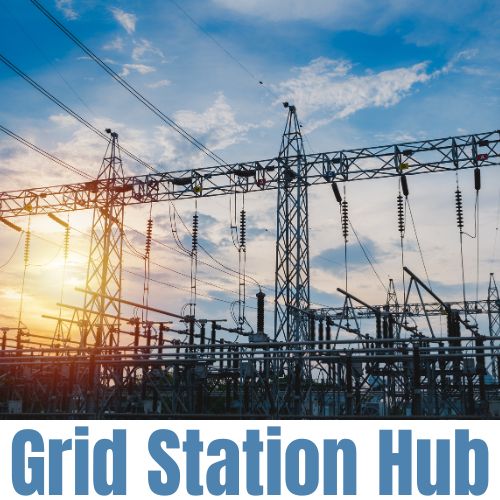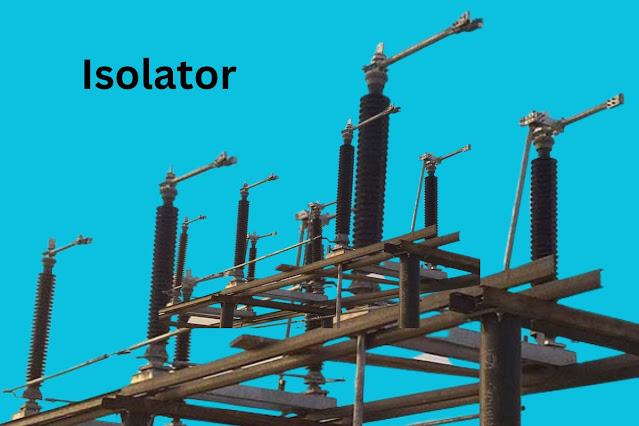Grid stations are the backbone of electricity distribution networks, responsible for efficient delivery of electricity to consumers. These stations encompass a large number of complex electrical systems and equipment. Among the key components that enable their safe and reliable operation are isolation. Isolators, also known as disconnect switches or isolation switches, act as off-load devices that play an important role in protecting electrical circuits and equipment from power supply.
Understanding Isolators
A. Definition and Purpose
B. Off-load Devices
Function of Isolators in Grid Stations
A. Electrical isolation and safety
B. Maintenance and Inspection
C. Emergency Situations
D. Overload and short circuit protection
Types of Isolators
A. Disconnect the switch.
B. Isolator switches
C. Isolation relay
D. Vibration isolators
Vibration isolators are special isolators designed to reduce the transfer of vibration from equipment to surrounding structures. In grid stations, they protect sensitive equipment from excessive vibrations, which can cause damage or affect performance. Vibration isolators use various mechanisms, such as elastic materials or springs, to effectively absorb and dissipate vibrations.
E. Spring Isolator
Spring isolators are specially designed to isolate the equipment from the effects of external vibrations and shocks. They use flexible springs to absorb and reduce vibrations, providing better protection to critical equipment in grid stations. Spring isolators are particularly effective in reducing the transmission of vibration to sensitive equipment or devices.
F. Sound isolators
Acoustic isolators, also known as acoustic isolators or noise isolators are deployed to minimize the transmission of sound or noise produced by equipment into the surrounding environment. In grid stations, sound isolators are used to reduce noise generated by transformers, generators, or other noisy equipment. They contribute to creating a calmer and more comfortable work environment for the personnel.
conclusion
Isolators play an important role in grid stations, ensuring safety and operational efficiency. Their function as off-load devices facilitates the isolation of specific circuits or equipment during maintenance, inspection, or emergency situations. By providing electrical isolation, isolators protect personnel from electrical hazards and protect equipment from damage. Different types of isolators, such as disconnect switches, isolation switches, isolation relays, vibration isolators, spring isolators, and sound isolators, meet specific needs and requirements within grid stations. Understanding the function and types of isolators empowers grid station operators to make informed decisions about their implementation, ultimately increasing the reliability and safety of power distribution systems.
FAQ
Q1- What is the role of the isolator?
The role of the isolator is to create a visible and reliable separation between a specific circuit or equipment and the power supply, allowing for the safe disconnection and isolation of that section for maintenance, repair, or inspection purposes.
Q2- Why do we use isolators in grid station?
Isolators provide electrical isolation in grid stations, facilitate maintenance and inspection activities, provide overload and short-circuit protection, and save personnel and equipment by allowing rapid isolation of faulty equipment in emergency situations. Used to ensure safety.
Q3- Is there an isolator off-load switch?
Yes, isolators are considered off-load switches because they are primarily operated when the associated equipment or circuit is not actively carrying current.
Q4- What are the benefits of isolators?
Advantages of isolators include:
- Safety:Isolators provide a visible and reliable means of disconnecting and isolating circuits or equipment, ensuring the safety of personnel during maintenance or repair work.
- Equipment Protection:Isolators protect sensitive equipment from electrical hazards, overload and short circuits by isolating it from the power supply.
- Efficient Maintenance: Isolators enable targeted isolation, allowing efficient maintenance and inspection activities without disrupting power across the grid.
- Fault Containment: Isolators help contain faults by immediately isolating the affected part, preventing further damage and minimizing interruptions to power supply
- Operational Flexibility: Isolators provide flexibility in managing power distribution systems, allowing controlled isolation and reconnection of specific circuits or devices as needed.



